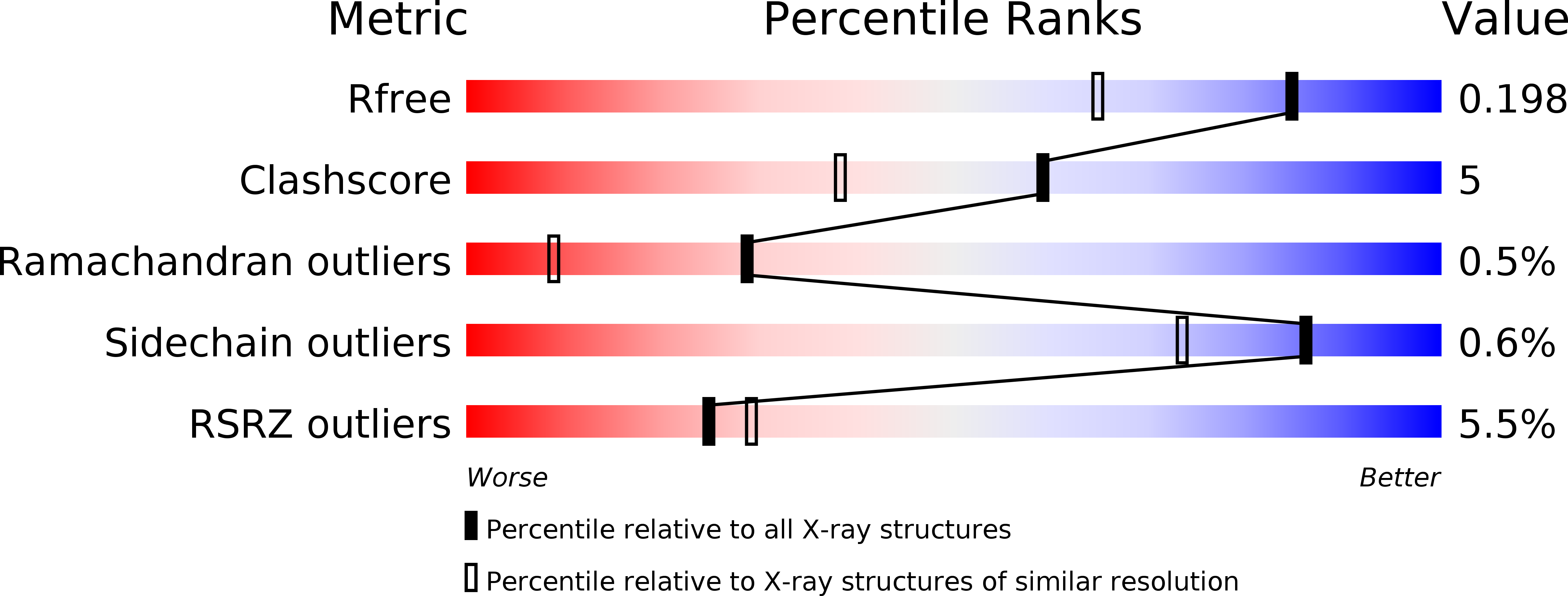
Deposition Date
2017-07-21
Release Date
2018-08-08
Last Version Date
2024-10-16
Entry Detail
PDB ID:
5OJH
Keywords:
Title:
Crystal structure of the extramembrane domain of the cellulose biosynthetic protein BcsG from Salmonella typhimurium
Biological Source:
Source Organism:
Host Organism:
Method Details:
Experimental Method:
Resolution:
1.55 Å
R-Value Free:
0.19
R-Value Work:
0.16
R-Value Observed:
0.16
Space Group:
P 31 2 1


